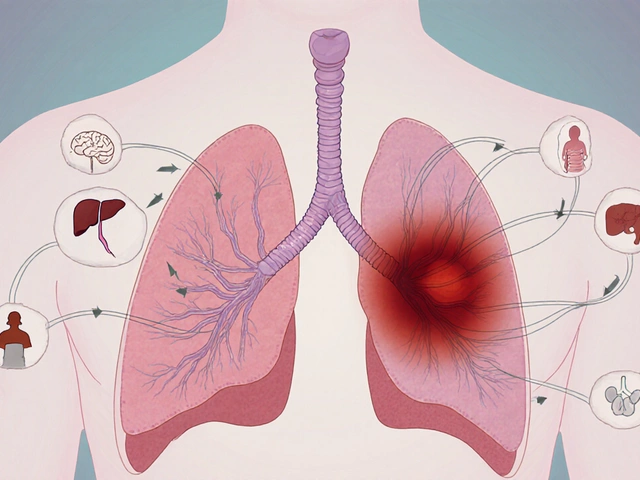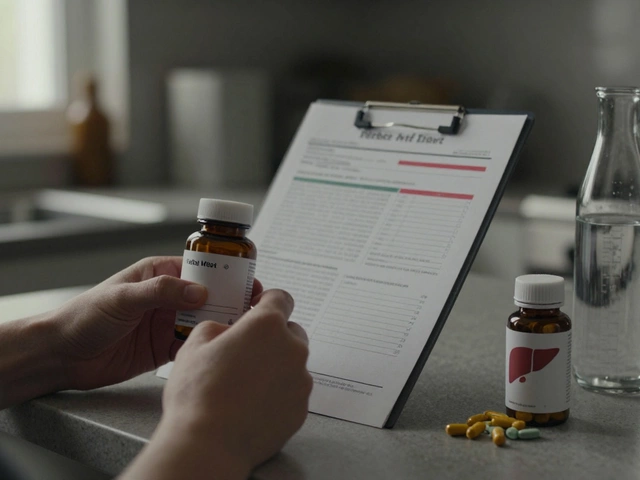- Home
- Orthopedics
- Safe Showering After Knee Replacement Surgery: Essential Recovery Guide

Safe Showering After Knee Replacement Surgery: Essential Recovery Guide
Getting your knee replaced is a massive step toward regaining the life you want—more walking, less pain, the simple pleasures like climbing stairs or just standing up without wincing. But then reality hits after surgery, and suddenly even simple routines—like taking a shower—feel confusing and a little bit risky. Can you shower right away, or do you need to wait? Skip this step and things might get messy (think: a sticky, sweaty few days), but jump in too soon, and you could risk infection—something you definitely don’t want.
Why Showering Matters After Knee Replacement
Showering after knee replacement isn’t just about getting clean, it’s about comfort, morale, and yes, your safety. Your skin is healing, your incision is vulnerable, and moisture can be a friend or an enemy. In England, about 100,000 people go through knee replacements each year, and countless NHS and private hospital guidelines share a familiar refrain: the timing of your first shower really matters. It isn’t just a random rule. Water combined with an open wound can quickly lead to infection. Infections post joint-replacement run around 1-2%, but even that small risk is serious—sometimes leading to further surgeries. That first wash, then, has doctors and nurses singing the same song: better safe, than sorry.
On the flip side, a clean body helps your wound heal better. Sweat and bacteria can get trapped around the surgical site. Imagine that on a muggy London summer day. If you’re stuck in a hospital gown for days, not being able to shower isn’t just an inconvenience. It sets you up for frustration—itchy, restless, and not feeling like yourself. So yes, showering soon after knee replacement matters, but it comes with strict rules and a healthy dash of caution.
Interestingly, studies in reputable journals like “The Journal of Arthroplasty” support early—but carefully controlled—showers. Across British orthopaedic units, more than 70% now advise limited showers as soon as 48 hours post-op, provided the surgical dressing stays dry and intact. If you stick to the right timing and technique, you’re far less likely to run into complications.
The take-home: showering feels fantastic and can speed your recovery by boosting your spirits, but following your surgeon’s timeline is non-negotiable if you want to avoid setbacks.
When is it Safe to Shower After Surgery?
This is the question everyone asks before leaving hospital. Timing matters more than you might think. Years ago, the advice was clear-cut: "wait 7 to 10 days, keep it dry, and suffer through it." Now, advances in wound care and waterproof dressings have turned things upside down, giving many patients the green light much sooner than expected.
If your surgical wound was closed with staples or traditional stitches and covered with standard, non-waterproof dressings, you’ll usually need to wait until your first follow-up—typically 7-14 days post-surgery. But if you’re sent home with a special waterproof dressing—often a see-through, flexible sticker that protects the incision—you could be allowed to shower as soon as 48 hours after surgery.
Let’s clear up the typical UK and US protocols. According to the British Orthopaedic Association and NHS, as well as guidelines from The American Academy of Orthopaedic Surgeons, the following recommendations make a handy timeline:
- 48-72 hours post-surgery: Most patients with waterproof dressings—and no signs of wound leakage—can safely shower. The dressing must remain completely sealed and intact during the shower.
- First follow-up visit (usually 7-14 days): If your wound was closed with staples or stitches and you have standard dressings, you’ll probably need to wait until dressings and sutures are removed. Always follow your surgeon’s specific advice.
- Never soak or scrub your wound: Baths, hot tubs, pools, or even sitting in a deep tub is off limits until the wound is completely closed.
A typical breakdown from NHS patient info leaflets and private hospital guidelines looks like this:
| Type of Dressing | When to Shower? | Precautions |
|---|---|---|
| Standard (Gauze with tape) | 7-14 days (until first follow-up) | Keep completely dry |
| Waterproof/occlusive | 48-72 hours after surgery | Check for leaks, do not remove |
| No dressing (rare, only after suture removal) | After wound is fully healed (14-21 days) | Avoid soaking |
The other factor is your wound’s appearance. No matter the type of dressing, if you see drainage, redness, excessive swelling, or anything that worries you, wait. A little clear or bloody drainage in the first day is normal, but anything more? That’s a flashing warning sign. Surgeons often say, "When in doubt, keep it dry." Ignore that bit of advice, and you risk a trip back to hospital that nobody wants.

How to Shower After Knee Replacement: Step-by-Step Tips
Ready to finally ditch the hospital basin and have a real shower? Here’s the thing: it isn’t as simple as just turning the tap. You’ll need to prep your bathroom, gather supplies, and have a helping hand for your first attempt. Most falls in the first week post knee replacement happen in the bathroom, so planning ahead can keep you safe while getting you squeaky clean.
- Get a shower chair or stool: Don’t try standing the whole time. Even strong, healthy adults lose their balance with a new knee, slippery tiles, and shampoo. Local councils in the UK sometimes loan out shower chairs for free, or you can pick one up at a pharmacy.
- Use a non-slip mat: This is non-negotiable. Even bathrooms with “slip-resistant” floors can be deadly when you’re wobbly and on crutches.
- Keep everything within reach: Set shampoo, soap, and towels within arm's reach before stepping in. You don’t want to be fishing for things mid-shower.
- Shower only if the dressing is waterproof: Always check your surgical site and the edges of the dressing. No peeling, curling edges, or visible gaps allowed.
- Face away from the tap: This keeps water from blasting directly onto your wound. Let the water run gently down your back instead of splashing the surgery site.
- Ask for help if you’re unsure: Especially those first few showers. Pride doesn’t prevent slips, and there’s no shame in needing a little support.
Here’s a quick play-by-play for a typical safe shower:
- Sit on the shower chair, swing your legs inside one at a time.
- Turn on the water so it’s tepid—not too hot. Scalds are a real risk when your senses are dulled by anesthesia or painkillers.
- Keep your back to the shower head. Avoid direct spray on the knee, especially in the first week.
- Clean the rest of your body as usual, but be extra gentle around your operated leg. Use a gentle, fragrance-free soap.
- Pat—not rub—your dressing completely dry as soon as you’re done. Check for any leaks.
- If your dressing gets soaked or starts to peel, call your nurse or doctor. Don’t try to fix it with tape or a DIY patch-up.
Bonus tips? Lay out your clothes and towels ahead of time. Have a friend or family member check in on you during the first couple of showers. Keep your mobile close, just in case you need help getting out. And keep telling yourself: this isn’t forever. Most people switch back to normal showering—no dressings, no drama—in 2-3 weeks.
Key Precautions and Warning Signs to Watch For
Even if everything seems textbook, knee replacement recovery can be unpredictable. Showers are safer with today’s dressings, but infections don’t care about hospital protocols. Use your eyes and your instincts—if something feels off, pause.
Here’s what you should always watch out for:
- Redness spreading away from the wound: Could mean infection
- Pus or yellow/green drainage: Serious sign, needs a doctor’s look
- Fever or chills after showering: Red flag. Don’t just blame it on room temperature.
- Sudden pain, new swelling, or throbbing in the knee: Could be infection or even a blood clot
- Dressing that lifts, leaks, or falls off after a shower: Don’t just re-stick it. Get fresh medical supplies and advice.
Here’s the stark truth: If you’re ever in doubt, skip the shower and call for help. Don’t let embarrassment keep you from dialing up your nurse or GP. Surgeons would rather answer a thousand “is this normal?” questions than fix a preventable complication.
Is it safe to get the knee wet after the first bandage comes off and the wound’s closed? Yes—usually around 2-3 weeks out, with a well-healed scar and the go-ahead from your nurse or surgeon. Until then, think of your incision as a precious, high-maintenance part of your body. A little TLC now means faster healing and fewer headaches down the line.
Got an itch, a scab, or a bit of harmless-looking redness? Don’t pick, scratch, or try to “air it out.” Just let it be. Infection can turn a brilliant new knee into a nightmare, so respect the process.

Arnav Singh
I am a health expert with a focus on medicine-related topics in India. My work involves researching and writing articles that aim to inform and educate readers about health and wellness practices. I enjoy exploring the intersections of traditional and modern medicine and how they impact healthcare in the Indian context. Writing for various health magazines and platforms allows me to share my insights with a wider audience.
About
Medical Resource Center India is a comprehensive online platform dedicated to providing reliable health information and medical resources in India. Explore a wide range of articles, tips, and advice on medicine, healthcare services, and wellness. Stay informed about the latest developments in Indian medicine and access valuable insights into maintaining a healthy lifestyle. Discover expert guidance and health solutions tailored for every Indian citizen. Your go-to destination for authoritative medical knowledge in India.






